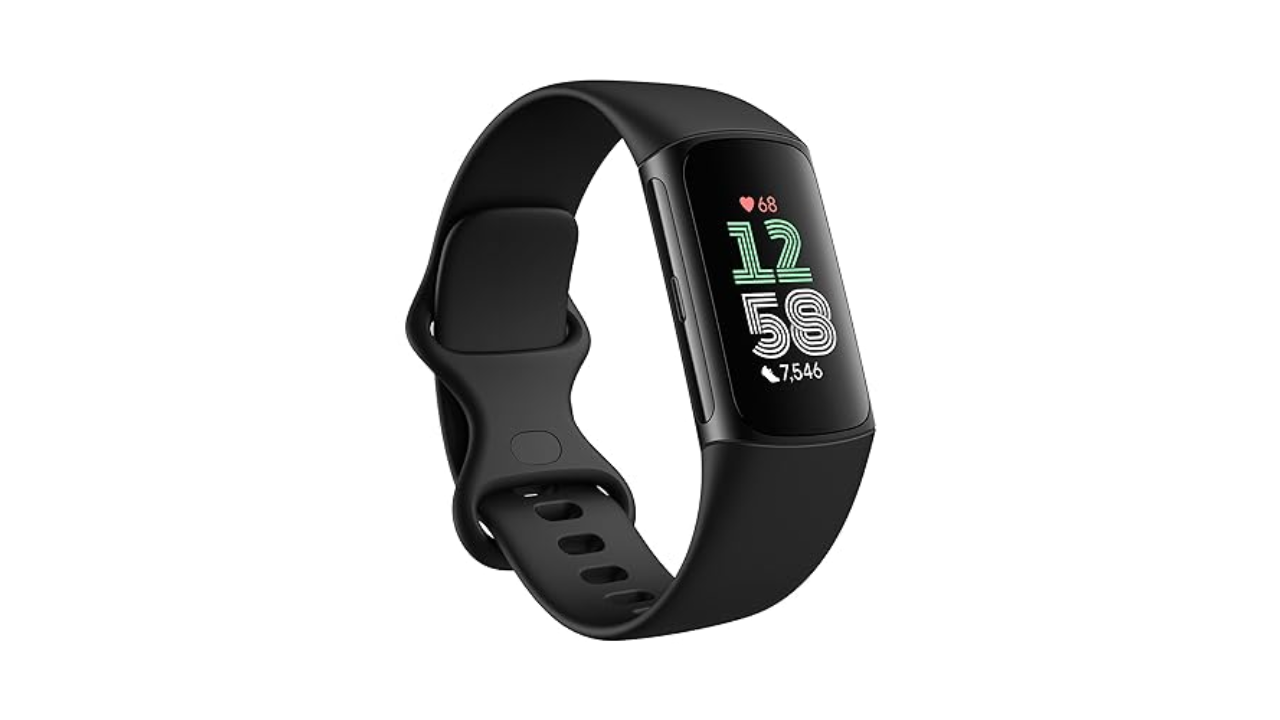The best GPS running watches for 2024
There are options for every athlete, at every budget.
Just because most of the best smartwatches have built-in GPS as a standard feature doesn’t mean they’re going to be the right choice for all runners. Whether you’re training for your first triathlon or you want to step up your game from beginner to intermediate runner, a dedicated GPS running watch can provide a lot of benefits over a standard smartwatch. Faster and more accurate GPS can be one of those things, in addition to more advanced health metrics, more trackable workout profiles and extra-long battery life. And those are on top of standard “smart” features like phone notification alerts, virtual assistant support, onboard music storage and more. I’ve been a regular runner for nearly five years and I tested out a bunch of the latest GPS running smartwatches to find the ones that are actually worth your money.
Best GPS running watch overall
Garmin Forerunner 165
Best GPS running smartwatch
Apple Watch Series 10
Best premium GPS running watch
Garmin Forerunner 965
Best fitness tracker with built in GPS
Fitbit Charge 6
What to consider before buying a GPS running watch
GPS speed and accuracy
The most important thing for a GPS running watch to have is fast, accurate GPS positioning. That might seem obvious, but it’s quite easy to get distracted by all of the other features most of these devices have. Since most of them can be worn all day long as standard smartwatches, there’s a lot of (possibly unnecessary) fluff that looks good on paper but won’t mean much if the core purpose if the device is left unfulfilled. To that end, I paid particular attention to how long it took each device’s built-in GPS to grab my location before a run, if it ever lost my spot and the accuracy of the generated maps. Also, the device should be smart enough to let you start tracking a run while the GPS looks for your location.
Workout profiles and trackable metrics
You may not be able to suss out GPS accuracy just by looking at a spec sheet (that’s where this guide can help), but you can check for features like supported workout profiles. That’s something you’ll want to look into, even if your one and only activity is running. Check to make sure the GPS running watch you’re considering supports all the kinds of running activities you like to do (outdoor runs, treadmill runs, etc) and any other workouts you may want to track with it.
Most fitness wearables today aren’t one-trick ponies; you’ll find a healthy number of trackable exercise modes on any running watch worth its salt. That said, the number of workout profiles can be directly proportional to a device’s price: the more premium the product, chances are the more specific, precise workouts it can monitor.
In a similar vein, you’ll want to check the trackable metrics of any watch you’re considering before you buy. Since we’re talking about GPS running watches, most will be able to track the basics like distance, heart rate and pace, and those are bare minimums. Some watches can monitor additional stats like speed, cadence, stride length, aerobic and anaerobic training effect, intensity minutes and more. If you’re already a serious runner who trains for multiple races each year, you’ll want to dig into the spec sheet of the watch you’re considering to make sure it can track all of your most necessary metrics.
Size and weight
It’s worth checking out a watch’s case size and weight before going all-in on one. GPS running watches, and standard smartwatches as well, can have a few different sizes to choose from so you’ll want to make sure you’re getting the best fit for your wrist. I have a smaller wrist, so I tend to avoid extra-large cases (anything over 42mm or so), especially if I intend on wearing the device all day long as my main timepiece. Weight, on the other hand, is a little less controllable, but typically smaller case sizes will save you a few grams in overall weight.
Battery life
Unlike regular smartwatches, GPS running watches have two types of battery life you’ll need to consider: with GPS turned on and in “smartwatch” mode. The former is more important than the latter because most GPS running watches have stellar battery life when used just as a smart timepiece. You can expect to get multiple days on a single charge, with some surviving more than two weeks (with all day and night wear) before they need a recharge.
Battery life with GPS turned on will be much shorter by comparison, but any GPS running watch worth its salt should give you at least 10-15 hours of life with the GPS being used continuously. The more you’re willing to spend, the higher that number typically gets, with some GPS running watches lasting for 40 hours while tracking your location.
Best GPS running watches for 2024
Out of all the watches I tested, the Garmin Forerunner 165 was the one I wanted to wear the most when I went out for a run. The expertise of the Forerunner line is in the name, and Garmin truly excels at making comprehensive yet friendly GPS running watches in flavors that will suit all kinds of athletes, from beginner to expert. The Forerunner 165 stands out with its lightweight design, bright AMOLED touchscreen, straightforward button controls, accurate built-in GPS and its ability to track workout stats just as well as all-day activity data.
Starting a run with the Forerunner 165 is as easy as pressing a single button — the top-right button on the case literally has “run” embossed onto it, and it takes you to the workout profile menu where you can choose the exercise you want to track. Run is the first option, but you have more than 25 profiles to choose from including track run, treadmill, walk, strength, swim and more. When running outside, the GPS took an average of 15-20 seconds to lock onto my location, but you don’t have to wait for it to do so — press the run button again to begin and the GPS will catch up on its own.
During a run, it’s easy to glance down at the bright, 1.2-inch AMOLED display to check stats like distance, pace and heart rate. Audio prompts are enabled by default and they’ll tell you the time it took you to complete each lap (mile). You can customize these prompts further in the Garmin Connect app if you want to know things like your current pace, heart rate or heart rate zone and other data. This is something I appreciate about Garmin Forerunner wearables in general — you can go as deep as you want with them. I prefer keeping audio prompts to a minimum, but someone with a different preference can get all of the info they want read out to them with just a few taps in the app.
That extends to other parts of the Forerunner experience as well via the Garmin Connect app, which has come a long way in recent years. The previously clunky, confusing app has been well refined so that you can customize its homepage the workout and activity stats you care about the most, including things like Body Battery, Sleep Score, menstrual cycle information and more. It’s easy to dive into your most recently tracked activity and get in the weeds with pace, cadence, training effect (aerobic or anaerobic), power and stamina stats. On top of that, Garmin’s adaptive training plans can help you prepare for 5K, 10K and half-marathon races with suggested daily workouts and personalized tips based on your most recent activity data. What frustrated me most in the past with Garmin Connect was the fact that it wasn’t very user-friendly, and that made it difficult to really use a device like the Forerunner 165 to the fullest. That’s not a problem anymore.
I found the 30.4mm case on the Forerunner 165 to be just the right size for my wrist, and at 39 grams, the watch is super lightweight and comfortable to wear even during the sweatiest of training sessions. The bands are interchangeable, too, since they’re a standard 20mm size. But I enjoyed the ones included with the Forerunner 165 because they have a healthy number of notches on them, making it easy to get a just-right fit to allow for accurate heart rate monitoring.
Garmin puts the battery life of the Forerunner 165 at 11 days in smartwatch mode, and I found that to be mostly accurate even with a handful of GPS-tracked runs thrown in. The company claims you’ll get up to 19 hours of battery life with continuous GPS use, which should be enough for most runners and athletes competing in long-haul races. You can also get the 165 with music storage built in or not, with the former allowing you to store music locally on the watch so you can listen with a pair of Bluetooth headphones.
The Garmin Forerunner 165 will set you back $250 without music storage, or $300 for the model with music storage built in. That’s on the lower end of the price spectrum for GPS running watches; you could easily spend $500 or more if you’re unsure about what you need and what’s just extra fluff. While Garmin does have a few cheaper devices, the Forerunner 165 strikes the right balance of feature set and price that will appeal to seasoned runners and those who are just diving into a more regimented running routine. It does all of the basics well and supports a number of extra features like training effect that will appease runners looking for something slightly above average from the jump, but will also be useful for novice runners who want one wearable that can grow with them as the advance their training.
Read our full Apple Watch Series 10 review
Don't think of the Apple Watch as a running watch. Think of it as a smartwatch that happens to have a running mode. Years after the original Watch made its debut, Apple has successfully transformed its wearable from an overpriced curiosity to an actually useful companion device for the masses. But being a gadget for the masses means that when it comes to running, the Apple Watch has never been as feature rich as competing devices built specifically for that purpose.
That remains true now, even with the Apple Watch Ultra 2 in the mix. But we’re talking about the standard Apple Watch here, and we like it in part because it’s the model on this list that we think most people will want to wear every day, all day long. The most recent model is stylish, or at least as stylish as a wrist-based computer can be, and certainly more so than any other running watch. The aluminum, water-resistant body and neutral Sport band go with most outfits and will continue to look fresh after all your sweaty workouts and jaunts through the rain. And the always-on display is easy to read in direct sunlight.
As for running specifically, you're getting the basics plus a few extras. You can see your distance, calorie burn, heart rate readings, average pace and also rolling pace, which is your pace over the past mile at any given moment. You can also set pace alerts — a warning that you're going faster than you meant to, for example. When reviewing a workout in the Fitness app, you can see additional stats like average power, vertical oscillation, ground contact time and stride length.
For more detailed tracking, your best bet is to look outside of the Apple ecosystem and experiment with third-party running apps for the iPhone, like Strava, RunKeeper, MapMyRun, Nike Run Club and others. Those let you track activities with the Apple Watch and sync data between the dedicated app and Apple Health — arguably the best of both worlds.
Apple promises an all-day battery life and, indeed, I never have a problem making it through the day even with a GPS-tracked run thrown in. That said, most dedicated running watches claim longer usage time — between 30 and 40 hours of overall battery life in some cases. When it comes to workouts specifically, Apple rates the battery life with GPS at up to seven hours. Given that, I would trust the Watch to last through a short run or even a half marathon, but it might struggle towards the end of a slower, 5-hour or more marathon.
If battery life is your biggest concern, you may want to consider the Apple Watch Ultra 2, which Apple claims can last up to 35 hours with GPS turned on. That’s on the high end of Apple’s spectrum, with the low end being 12 hours with GPS turned on and no other compromises (like Low Power Mode enabled). Still, 12 hours is nearly double the GPS-enabled battery life of the Series 10, so the Ultra could be a good option for runners who want a watch they can comfortably (and stylishly) wear all day and still use for training. However, more casual runners will find all they need in the standard Apple Watch.
And for anyone looking to save some cash, the Apple Watch SE isn’t a bad option if you know this formula will work best for you. The SE has all of the same core running features as the standard Apple Watch, but you will have to sacrifice in a few ways. Compared to the Apple Watch Series 10, the Apple Watch SE’s display is about half as bright at peak strength, which may make it harder to read outdoors. The SE also runs on the S8 SiP, which won’t be as efficient as the new S10 in the Series 10. Elsewhere, there’s no fast-charging or ECG capabilities on the SE, and it’s not IPX6 dust resistant. Notice how none of those features are specifically related to working out or running, but they could affect your overall experience and the longevity of your smartwatch.
Once you’ve used one Garmin Forerunner watch, you’ve pretty much used them all. The biggest differences between our top pick and the more advanced Garmin Forerunner 965 come in extra features, plus a larger case size that sports a sleek titanium bezel.
For starters, there are a number of more specific workout modes available on the Forerunner 965 that aren’t on the 165, including indoor climbing, archery and bouldering. The premium watch also supports trackable metrics like optional all-day acclimation for pulse ox, and more advanced data points like training readiness and status.
To get a good understanding of the minute differences between various Garmin devices, the company’s site has a handy comparison tool that will give you the rundown of all the most nerdy stats. If you have a targeted training plan or a specific goal you’re trying to reach, it’ worth consulting the comparison tool to make sure the GPS running watch you’re thinking of buying can handle everything you throw at it, and reports everything back to you that you need most.
The two hardware differences between the Forerunner 965 and the 165 that might make or break your decision come in GPS and battery life. The 965 has multiband GPS, which Garmin claims is more accurate when using the watch in “challenging” environments like amongst tall buildings in cities and in areas with lots of tree cover. I didn’t get the chance to test this since I live in suburbia where homes may be semi-close to each other, but skyscrapers are nonexistent. However, the Forerunner 965 was noticeably faster at acquiring a GPS signal before starting a run — it typically only took 5-10 seconds for it to lock onto my location.
Battery life is rated higher on the Forerunner 965 as well: you can get up to 23 days in smartwatch mode, which is double that of the Forerunner 165’s 11-day battery life in the same mode. The 965 can also run for a maximum of 31 hours in GPS mode (it could be less depending on the other sensors you have employed simultaneously), while the 165 will last about 19 hours. Much like with multiband GPS, deciding how much battery life you need will largely depend on your training regimen and personal preferences. If you’re a long-range runner who spends hours on the trail during every training session, it’s fair to say either Forerunner device will serve you well — but you’ll have a significant battery buffer if you go with the more premium option.
We’d be remiss to not mention the Fitbit Charge 6 in this guide, which sits at the top of our list of best fitness trackers. If you’re not sold on the traditional timepiece design, the Charge 6 offers a compelling alternative. It has a lower profile overall, not to mention its band design is more svelte than most of the top picks on this list. It still has a full-color AMOLED touch display, a side button for easier navigation, 20 exercise modes and a days-long battery life. The built-in GPS provides accurate distance and pace tracking for outdoor runs and bike rides, and you can even pair the Charge 6 with some exercise machines via Bluetooth when you’re exercising indoors.
Where you sacrifice with the Charge 6 is in advanced features and customization. It can’t compete with Garmin devices when it comes to exercise data tracked, and it doesn’t help that some activity data lies behind the Fitbit Premium paywall either. Watchfaces are customizable only to a point and the bands are proprietary. However, it’s one of the cheaper items on this list, so if you’re looking to only spend what’s necessary to get built-in GPS in a wearable, this could be a good option if you’re willing to deal with some limitations.
Other GPS running watches we tested
Polar Pacer Pro
The Polar Pacer Pro looked and felt quite similar to our top pick, and it mapped my outdoor runs accurately. However, Polar’s companion app is leagues behind Garmin’s with a confusing interface and a design that feels very much stuck in the past. It’s also $100 more expensive than our top pick.
Amazfit Cheetah Pro
The Amazfit Cheetah Pro tracked my outdoor runs accurately and Zepp’s companion app has a coaching feature much like Garmin’s adaptive training plans that can outline a routine for you to complete in preparation for a race or to achieve a specific goal. My biggest issue with it was that its touchscreen wasn’t very responsive — it took multiple hard taps on the display to wake it, and often the raise-to-wake feature didn’t work, leaving me staring at a dark screen.








